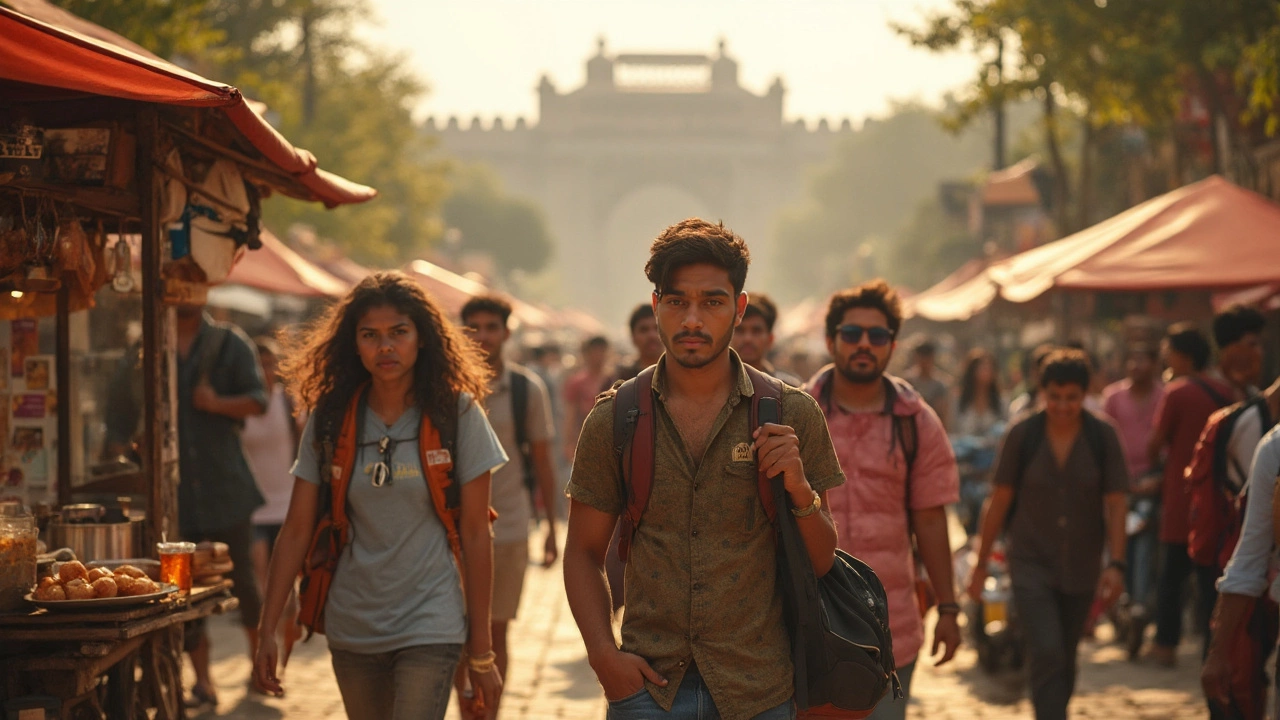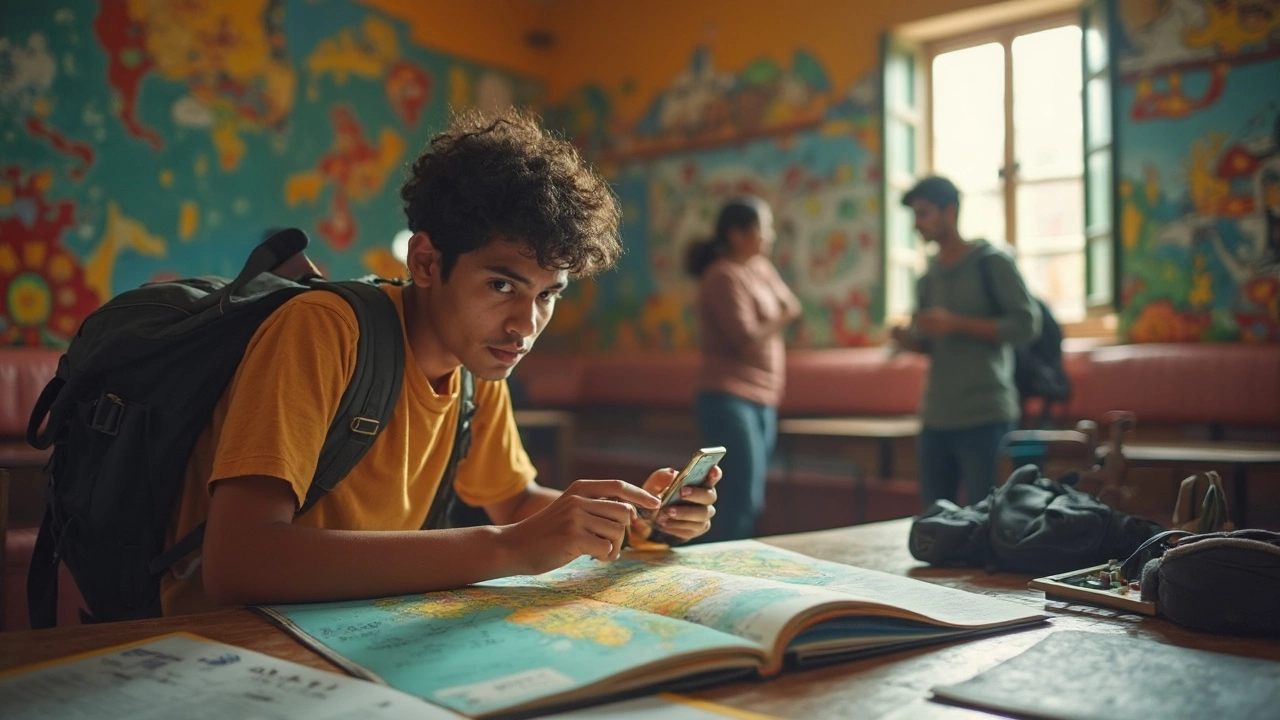Picturing your wallet after a trip to India? That all depends on how many days you spend and what you want out of those days. India is one of those places where you’ll never see it all—so the real question is, how much time do you actually need to get your fill without draining your savings?
If you just want a taste—the type of whirlwind trip where you see the Taj Mahal, grab some curry, and snap a photo in Jaipur—you can fit those big moments into as little as a week. But if you’re dreaming about sunrise in Varanasi, rickshaw rides in Delhi, the beaches of Goa, and spicy street food everywhere in between, a week just won’t cut it. And here’s a little secret: travel time inside India takes longer than you think. Trains and buses eat up hours. Sometimes, an eight-hour train ride actually takes twelve. Plan less and see more.
- What Do You Want Out of Your India Trip?
- Suggested Itineraries for Every Budget
- How to Make the Most of Your Days
- Mistakes to Avoid When Planning Your Stay
What Do You Want Out of Your India Trip?
Before locking in the number of days for your India trip, ask yourself: What’s at the top of your must-see list? If your dream is ticking off UNESCO sites, you’ll want a different plan than someone craving cheap beach days. Some folks just want to see the Taj Mahal and bounce. Others want to poke around in bazaars, eat amazing street food, or try out backpacking from city to city. Your answer shapes everything—from what it’ll cost to how many days you really need.
Let’s break it down by the main types of budget travelers:
- The Quick-Stopper: Wants the Insta-famous highlights like Delhi, Agra, and Jaipur. You can squeeze this into 7 days, but you’ll be on the move almost everyday.
- The Cultural Digger: Loves soaking up history, temples, festivals, and museums. Needs at least 2 weeks to get more than just the surface.
- The Wanderer: Prefers slow travel, exploring local markets, food stalls, and side streets. Budget for at least 3 or even 4 weeks—India rewards folks who have the time to linger.
- The Adventure Seeker: Into trekking in the Himalayas, wildlife safaris, or beach-crawling in Goa and Kerala. You’ll want a solid 3+ weeks to hit even two of these regions without burning out on night buses and cheap hostels.
In 2024, Lonely Planet reported that the average international traveler spends about 14 days in India on a first visit. But don’t take that as gospel—travelers with rushed schedules often admit they regret not booking more time. As a spokesman from India’s Ministry of Tourism once said:
“There’s no number of days that’s truly enough in India—but for your first trip, give yourself at least two weeks if you want to see more than just airports and train stations.”
Let’s make this practical. Here’s a rough idea of how long to spend in the country, based on your travel style and focus:
| Travel Style | Minimum Days | Regions You Can Cover |
|---|---|---|
| Quick Highlights | 7 | Golden Triangle (Delhi, Agra, Jaipur) |
| Cultural Immersion | 14 | Golden Triangle + Varanasi or Rajasthan |
| Slow Backpacking | 21-30 | Multiple regions (North and South India) |
| Special Adventures | 21+ | Mountains, wildlife, or coastal India |
If you only have a week, focus on one region. If you have more time, don’t pack in too much—India’s size (it’s almost as big as Europe!) and those never-on-time trains will eat up your days. Thinking about what you want—and your style of budget travel—is the best starting point for picking that magic number of days.
Suggested Itineraries for Every Budget
India's size and chaos make you second-guess every plan. If you're traveling on a budget, picking the right number of days helps you save and still see what matters to you. Here are a few real-world ideas—these are based on actual travel patterns people use, not just magazine fantasy trips.
- 7 days: Perfect for first timers, especially if you're tight on cash or vacation time. Stick to the "Golden Triangle"—Delhi, Agra, and Jaipur. These cities are packed with famous sights, trains between them are cheap, and you won’t waste time on marathon travel.
- 14 days: You get breathing space. Add Varanasi for that holy river vibe or swing down to Rajasthan for desert forts and cheap street eats. Backpacker hostels go for as low as $5 a night; overnight trains let you save on a night’s stay and wake up in a new state.
- 21 days: Now you can peek beyond the typical routes. Mix in the beaches of Goa or Kerala’s backwaters. You could also hop north to the Himalayas if that's your thing. Longer trips mean your per-day spending drops—once you crack local transport and eat where locals do, money goes further here than in most places.
Here’s a quick look at how your time, distance, and budget needs might shape up for each:
| Trip Length | Where You Can Go | Average Budget (USD) |
|---|---|---|
| 7 days | Delhi, Agra, Jaipur | $200-$350 |
| 14 days | Golden Triangle + Varanasi/Rajasthan | $350-$550 |
| 21 days | North + South (Goa/Kerala) | $500-$800 |
One big tip: avoid packing in too many cities. The cost of moving around—trains, rickshaws, and snacks at every stop—adds up fast and cuts into your experience. Staying longer in one area helps you stretch your rupees and slow down a bit. Local buses, third-class sleeper trains, or sharing a tuk-tuk keep your trip budget friendly and way more interesting than flying everywhere.

How to Make the Most of Your Days
To get the best out of your India trip, planning is everything. Every city is packed with things to do and see, but crowds and traffic can slow you down. So, pick your top sights and slot in some chill time—don’t cram your schedule, or you’ll end up only seeing the inside of a bus.
One trick: travel early in the morning or overnight. Night trains or sleeper buses let you save on accommodation and wake up in your next spot. Always book the budget travel train tickets in advance, especially for popular routes like Delhi to Varanasi or Agra to Jaipur. Indian Railways opens booking 120 days out, and sleeper or third AC class is usually the sweet spot for saving cash without suffering.
Eat local where possible. Food from street stalls or dhabas (simple roadside eateries) is not only tasty but also friendly to your wallet. For travelers, lunch can be as cheap as 80 rupees (about $1), and you’ll spend barely a tenth of what you would at a touristy restaurant. Just look for busy stalls: the locals know what’s safe and good.
Another key move is to choose cities that are close together to cut down on long hauls. In Rajasthan, for example, Jaipur, Jodhpur, and Udaipur all fit on a neat loop—about 5-7 hours by train or bus between each. If you’re in the south, Kochi, Alleppey, and Varkala line up the same way. Less time stuck in transit means more time exploring.
Want to know where your money—and daylight—really goes? Here’s a quick breakdown of a common seven-day itinerary for first-timers on a budget:
| Day | City | What to Do |
|---|---|---|
| 1 | Delhi | Old Delhi walk, Red Fort, street food at Chandni Chowk |
| 2 | Agra | Taj Mahal at sunrise, Agra Fort |
| 3 | Jaipur | Amber Fort, City Palace, local bazaar |
| 4 | Jaipur to Pushkar | Sunset at the lake, temple strolls |
| 5 | Jodhpur | Mehrangarh Fort, blue city walk |
| 6 | Udaipur | City Palace, boat ride on Lake Pichola |
| 7 | Departure | Last-minute shopping, travel to your exit city |
If you plan this kind of loop, you’ll hit a ton of must-see spots without doubling back or wasting full days on the road. Prioritize, be realistic about how much you can do, and always leave a little flex time. Surprises and detours make for the best stories in India.
Mistakes to Avoid When Planning Your Stay
It’s easy to make rookie mistakes when mapping out your India trip, especially if your goal is smart budget travel. Before you book that ticket, there are a few blunders that could turn your adventure into an exhausting mess—or just eat through your cash way faster than necessary.
- Squeezing in Too Much — India’s cities and regions are massive. A lot of travelers plan a nonstop itinerary, thinking they’ll see six different states in ten days. You’ll just end up staring out the window of a bus or train instead of actually seeing places. Pick fewer spots and give yourself time to experience them.
- Underestimating Travel Times — Trains can be late and roads get jammed. Even short hops can take hours. If Google says a bus ride is four hours, add at least an extra hour, maybe two, especially if you’re going between states or during festival season.
- Ignoring Weather and Festivals — India’s climate varies a lot. Monsoon season in Goa isn't much fun if you’re hoping for beaches. Big cities get swamped with crowds during festivals like Diwali or Holi. Check the calendar before you lock in your dates.
- Overpacking — You’ll end up lugging your bag up narrow train steps or through busy markets. Take only what you need. Laundry is cheap and everywhere.
- Not Budgeting for Sightseeing Fees — Entry fees for top sites add up fast. The Taj Mahal alone is about 1,300 rupees for foreigners. Museums, forts, and wildlife parks aren’t always free or cheap, either.
- Skipping Train and Bus Bookings — Seats on popular routes sell out, sometimes weeks ahead. Use apps like IRCTC or 12Go Asia to reserve early. Buying tickets last-minute at the station often means you’ll pay more—or not get a seat at all.
Wondering what those travel times can really look like? Here’s a quick table you can check before you plan:
| Route | Average Train Time | Average Bus Time |
|---|---|---|
| Delhi to Jaipur | 4.5 hours | 5-6 hours |
| Delhi to Varanasi | 10-12 hours | 13-15 hours |
| Mumbai to Goa | 8-10 hours | 12-14 hours |
Real talk—you’ll save money and sanity if you cut down your list, book essentials ahead, avoid rainy months, and leave some days totally unplanned. That’s how you make budget travel in India work for you, not against you.
